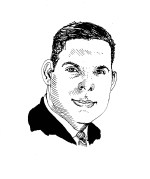The Latest Lousy Jobs Report and Its Effects on Real Estate Investment
By Sam Chandan July 14, 2011 11:34 am
reprints Last Friday’s employment report underscores that the national economic and labor market recoveries remain unusually fragile even two years after the recession’s formal end. Too many investors and lenders underestimate the drags on value if interest rates should rise ahead of cash flow.
Last Friday’s employment report underscores that the national economic and labor market recoveries remain unusually fragile even two years after the recession’s formal end. Too many investors and lenders underestimate the drags on value if interest rates should rise ahead of cash flow.
Indulging the Dismal Science
The Bureau of Labor Statistics reports that private payrolls expanded by just 57,000 jobs during June, the smallest increase since May 2010. An uptick in the unemployment rate, to 9.2 percent, was blunted as more than 400,000 Americans exited the labor force.
Important real estate market barometers, including construction employment, reported declines, as did several office-using employment sectors, including financial activities. At the national level, there are fewer jobs in financial activities than a year ago.
These latest results are consistent with a recovery that has struggled to develop momentum. As compared with the employment peak in January 2008, 8.8 million jobs were lost and 1.8 million have been recovered.
The characteristics of the newly created jobs are also an issue. In June, roughly 60 percent of net new private employment was in the leisure and hospitality sector. These relatively low-wage jobs were a drag on aggregate measures of compensation, pushing average wages lower across all private workers in June.
Should We Anticipate Less?
The jobs report coincides with a swath of just-released data relating to second-quarter rent and occupancy trends. With the exception of apartments, where the unique relationship to owner-occupied housing remains exceptionally favorable to rental fundamentals, other commercial property sectors showed signs of slower gains as compared with earlier in the year. Given the capriciousness of what drives absorption, the fundamentals reports come as no surprise.
Absent stronger labor market outcomes and a rise in business confidence, the outlook for fundamentals will remain mixed. That presents a challenge for investors, given that capital inflows and prices have diverged from the weaker cash-flow drivers of value, especially in large markets.
Particularly, as interest rates rise from their historic lows, which now comprise a central pillar of the investment and lending market’s current buoyancy, property values will come under increasing pressure absent more robust net absorption.
As for whether employment growth will accelerate, opinions vary on the magnitude and timing. To the extent that uncertainty on key policy issues—including the federal budget, taxes, financial reform and health care reform—are constraining otherwise profitable businesses from moving forward with payroll expansion, outcomes are within the scope of our influence. Other factors elude our control, raising concerns that the “normal” rate of unemployment may have risen permanently.
Some Labor Economics
While the normal rate of unemployment is an ambiguous concept, the Congressional Budget Office currently estimates that the conceptually related Non-accelerating Inflation Rate of Unemployment (NAIRU) has risen from 4.8 percent before the recession to 5.2 percent. In a recent brief from the Federal Reserve Bank of San Francisco, economists Justin Weidner and John Williams suggest that the new normal is even higher [1], though it may prove temporary:
… mismatches in the skills of workers and jobs, extended unemployment benefits, and very high rates of long-term joblessness, may be impeding the return to “normal” unemployment rates of around 5 percent. An examination of alternative measures of labor market conditions suggests that the “normal” unemployment rate may have risen as much as 1.7 percentage points to about 6.7 percent …
Messrs. Weidner and Williams’s reference to a deficiency in the matching process is supported by other research, which also shows that growing businesses are challenged in filling open positions. As job openings have risen, employment has failed to keep pace.
The Federal Reserve Board’s Regis Barnichon and his colleagues study the issue in a recent analysis of the Beveridge curve [2], which maps the negative relationship between the job-openings rate and the unemployment rate. While cautioning against inferences relating to the natural unemployment rate, they find that most of the current breakdown in the Beveridge relationship can be attributed to a declining vacancy yield—the ratio of hires to open positions, which is observable across industries. Changes in labor force participation and frictional unemployment, other reasons for movements in the curve, appear less relevant at this juncture.
What Next?
Wavering confidence in the private market’s capacity to deliver strong and consistent job gains—irrespective of the reasons—are feeding calls for more support from Washington. But if the policy and market uncertainty stemming from government intervention is part of the drag on business hiring, another round of short-term programs may prove counterproductive.
An editorial in this weekend’s New York Times correctly points out that it is difficult to quantify the impact of broad policy decisions that are not directly related to employment costs on business hiring. With respect to the budget talks, it goes on to state, “There is still time for the president to insist that the debt talks include a substantial program to put people to work now, while reducing the deficit over a longer period.”
In assessing the risks of such a program, we must consider that the private sector and our international creditors could interpret a major departure from fiscal discipline in a different light, undermining their confidence in us rather than bolstering it.
dsc@chandan.com
Sam Chandan, Ph.D., is president and chief economist of Chandan Economics and an adjunct professor at the Wharton School.
1. Justin Weidner and John Williams: What Is the New Normal Unemployment Rate? Federal Reserve Bank of San Francisco Economic Letter, February 14, 2011, 2011-05.
2. Regis Barnichon, Michael Elsby, Bart Hobijn, and Aysegul Sahin: Which Industries Are Shifting the Beveridge Curve? Federal Reserve Bank of San Francisco Working Paper Series, December 2010, 2010-32.


